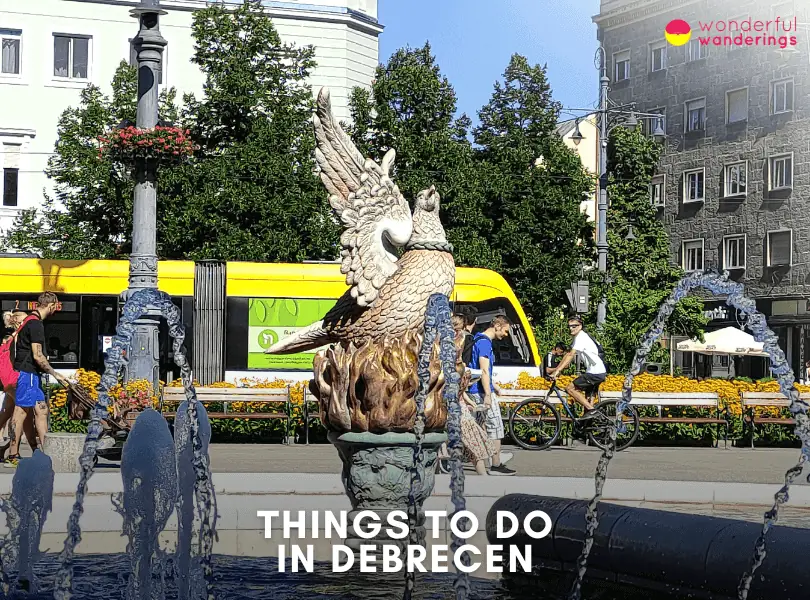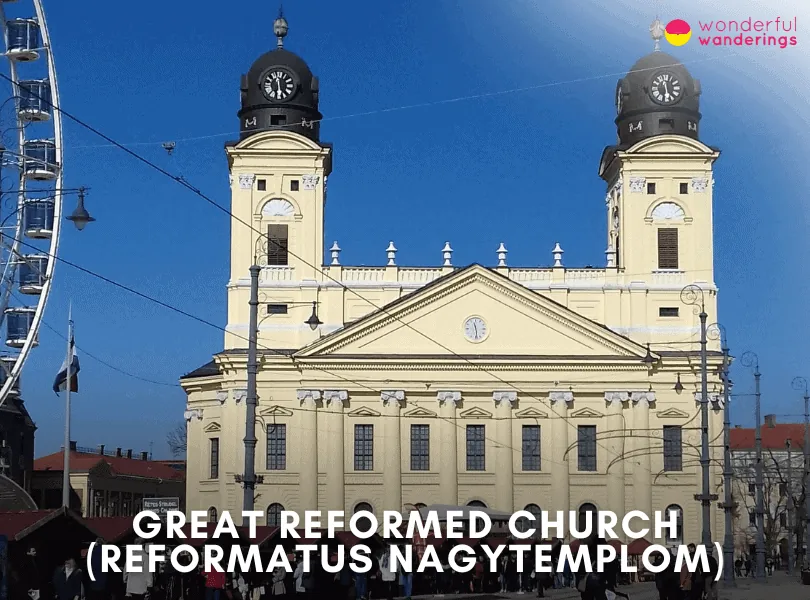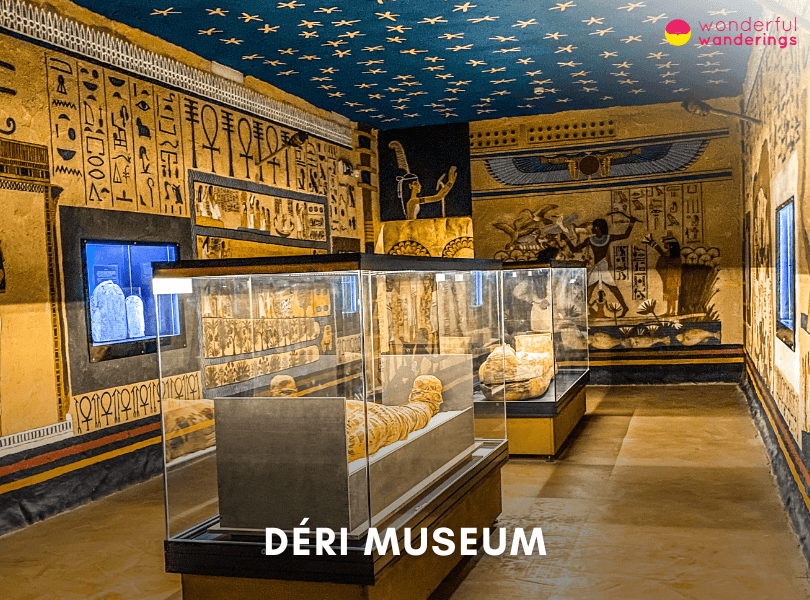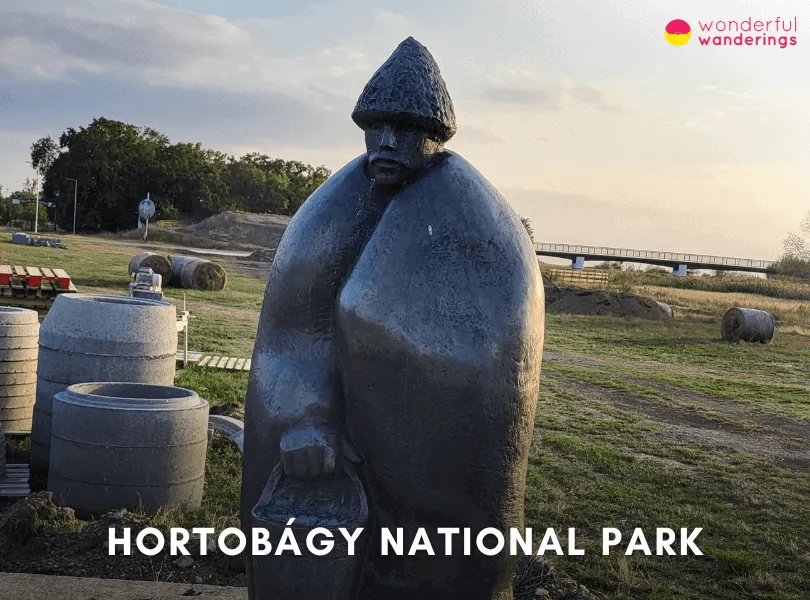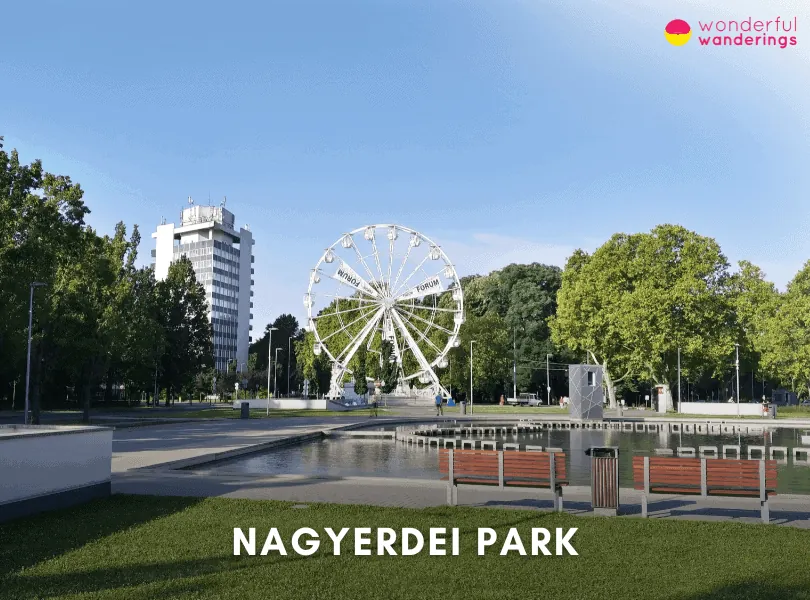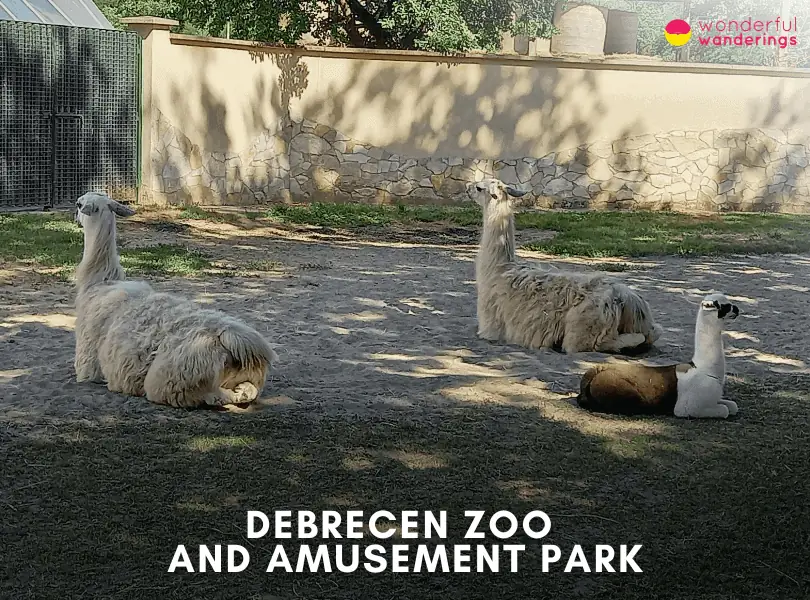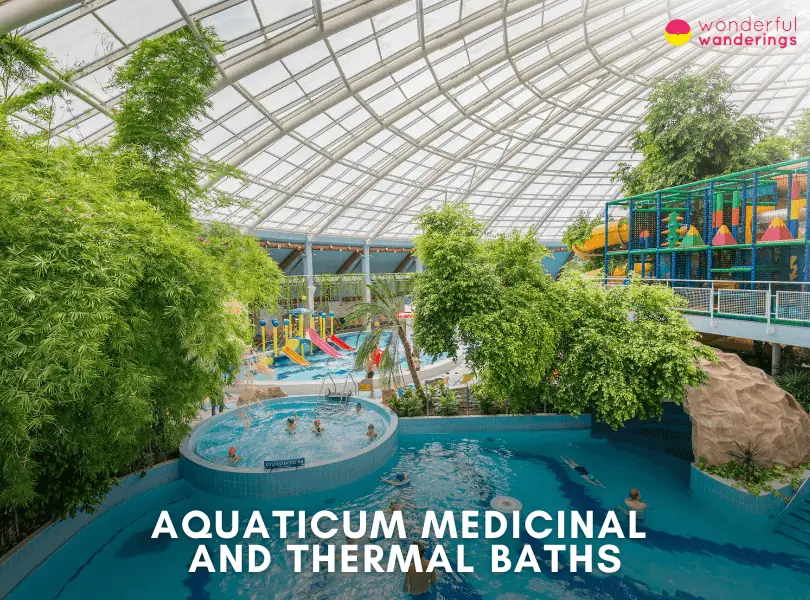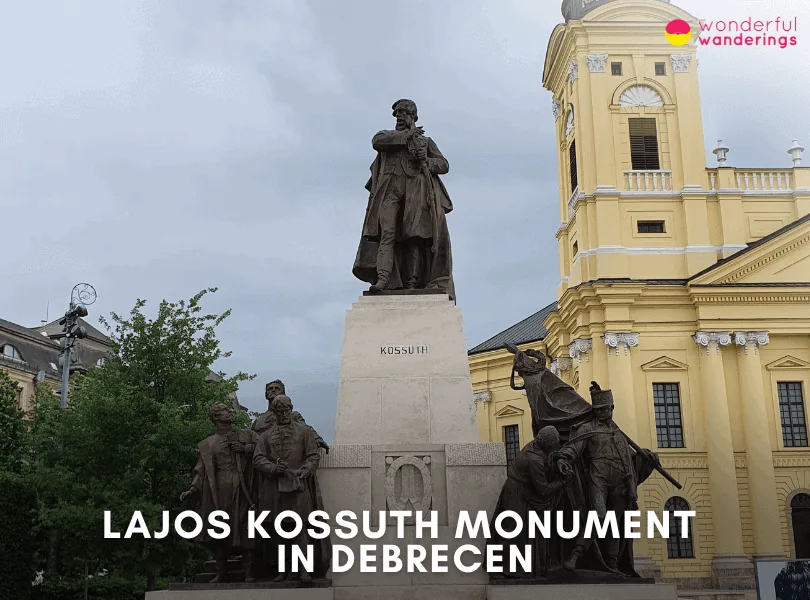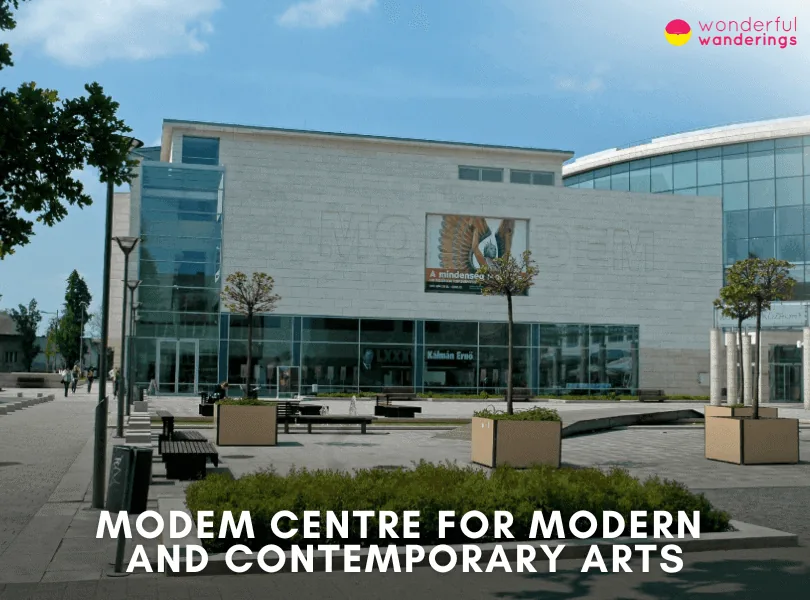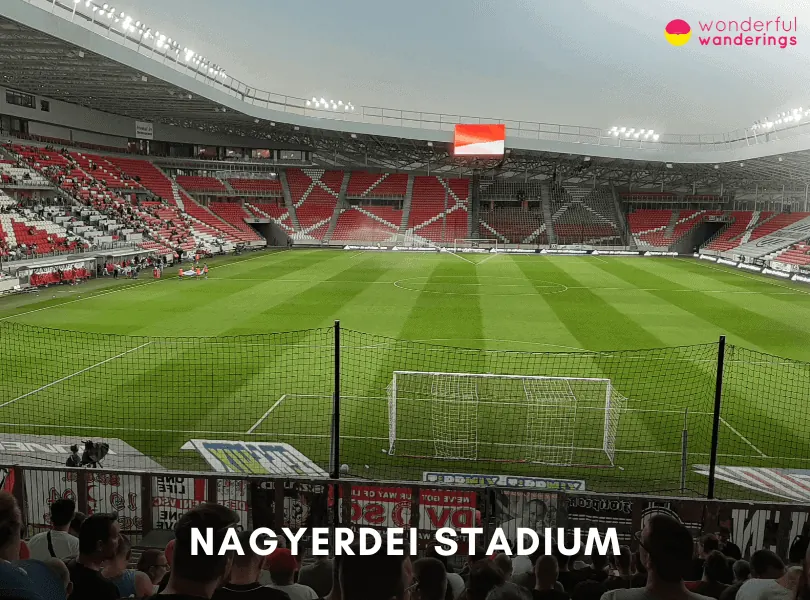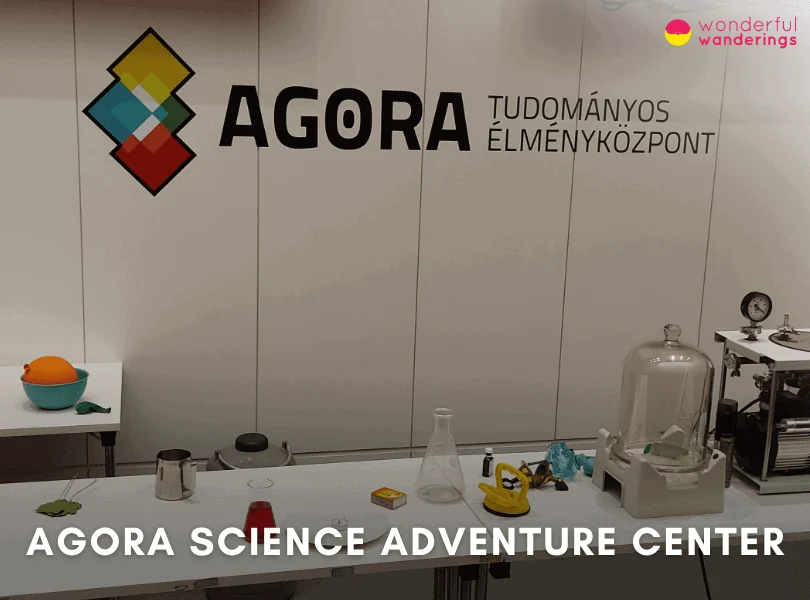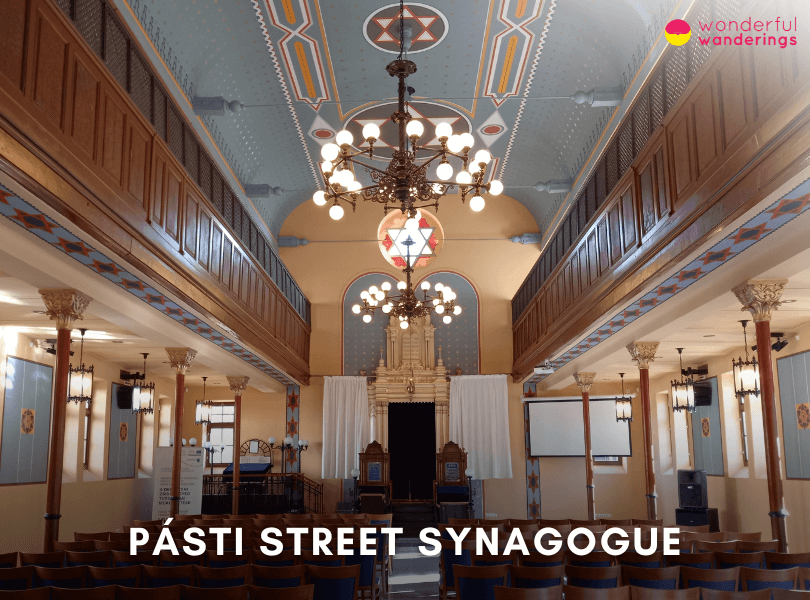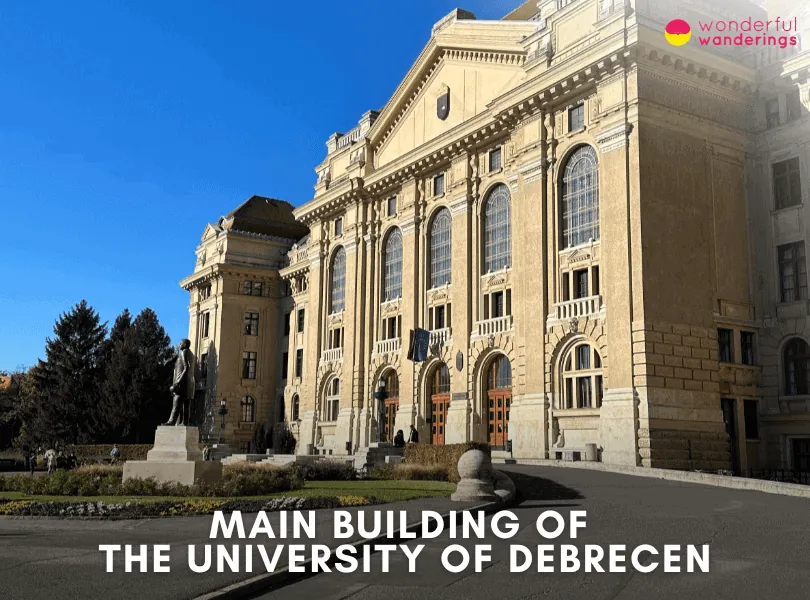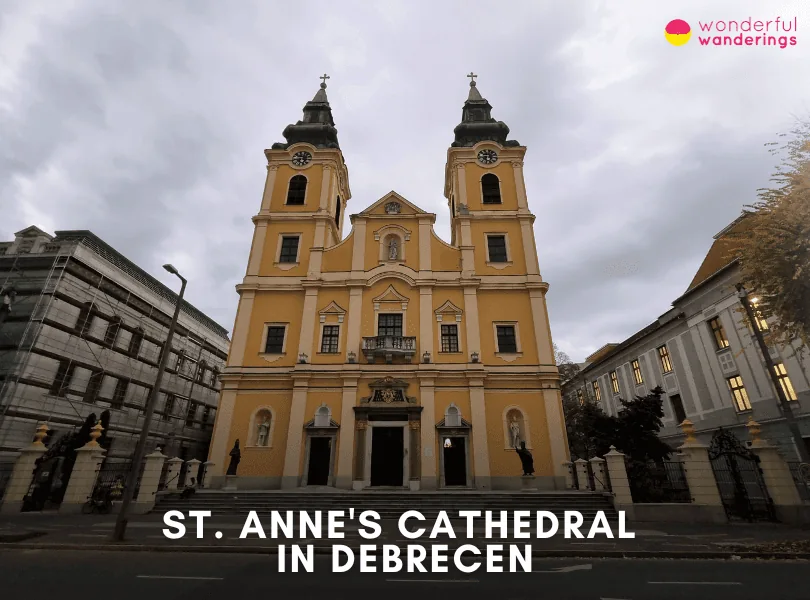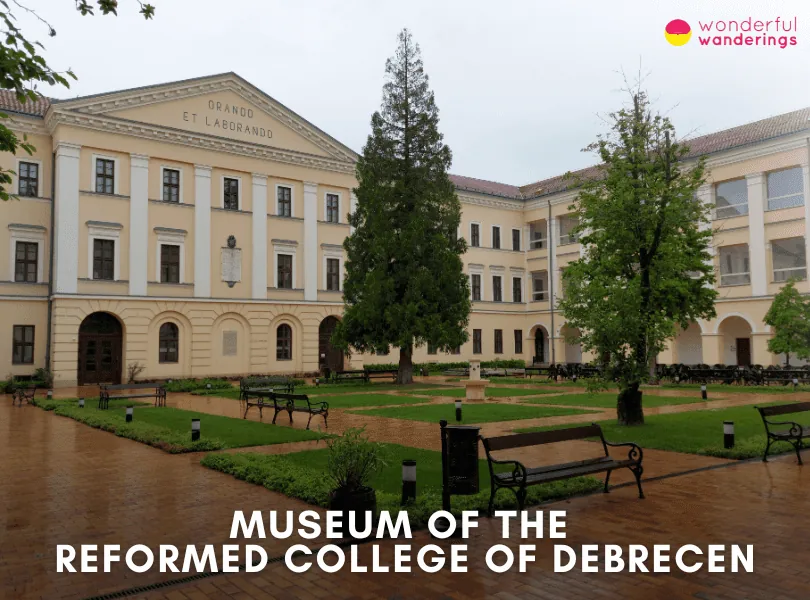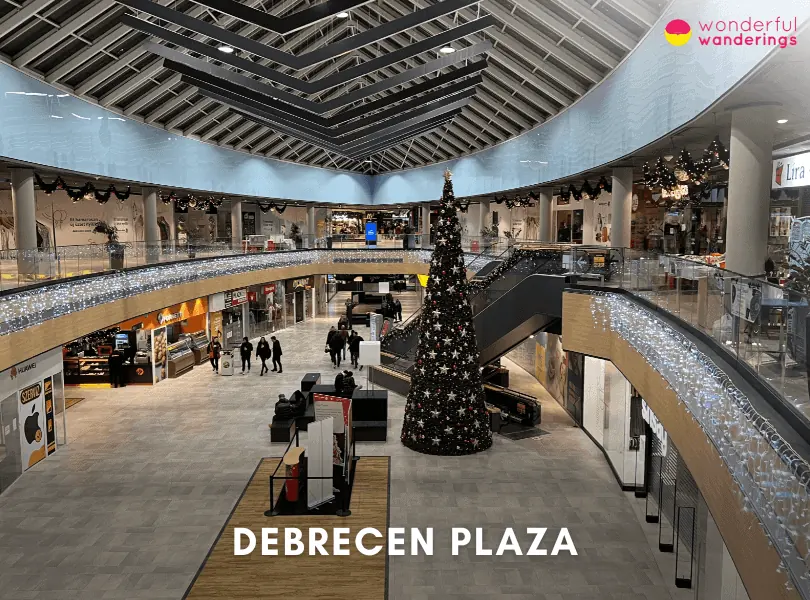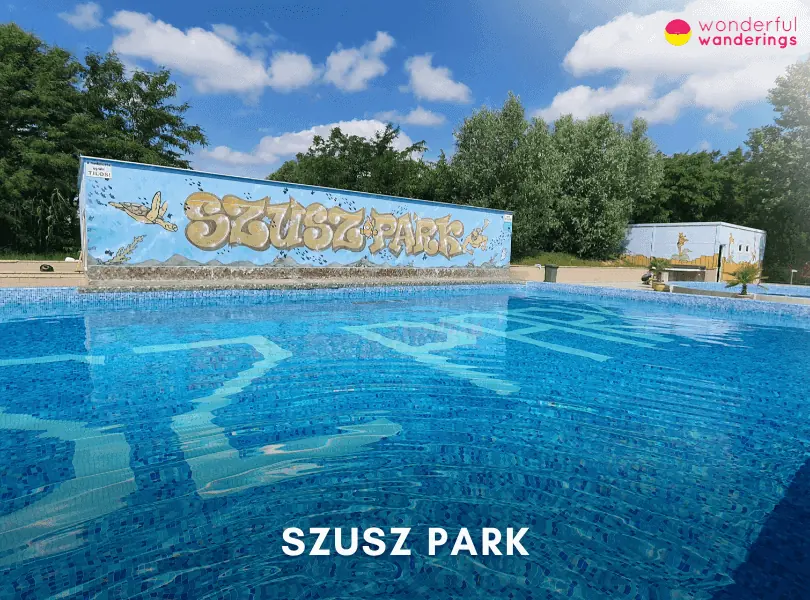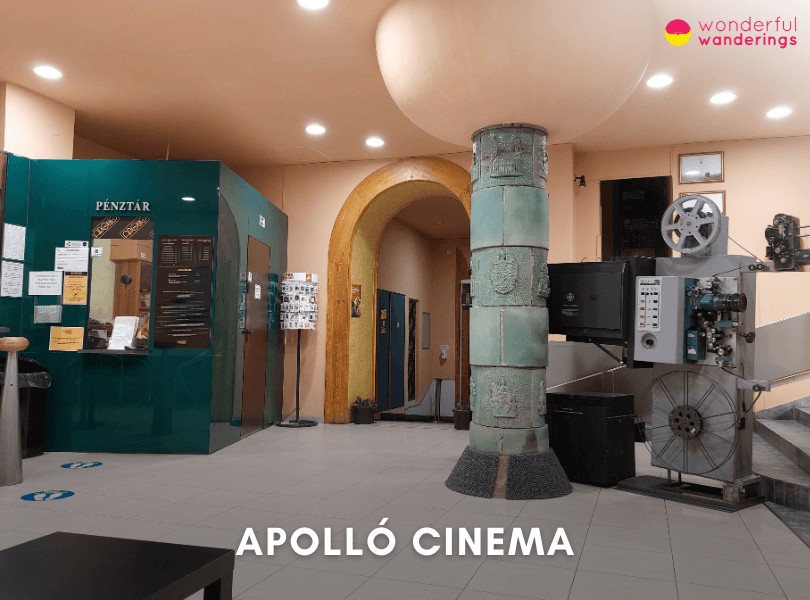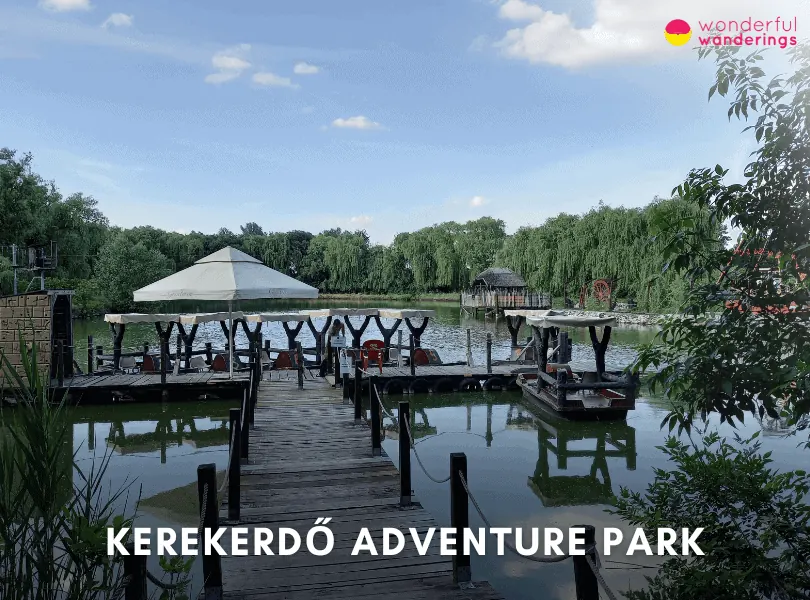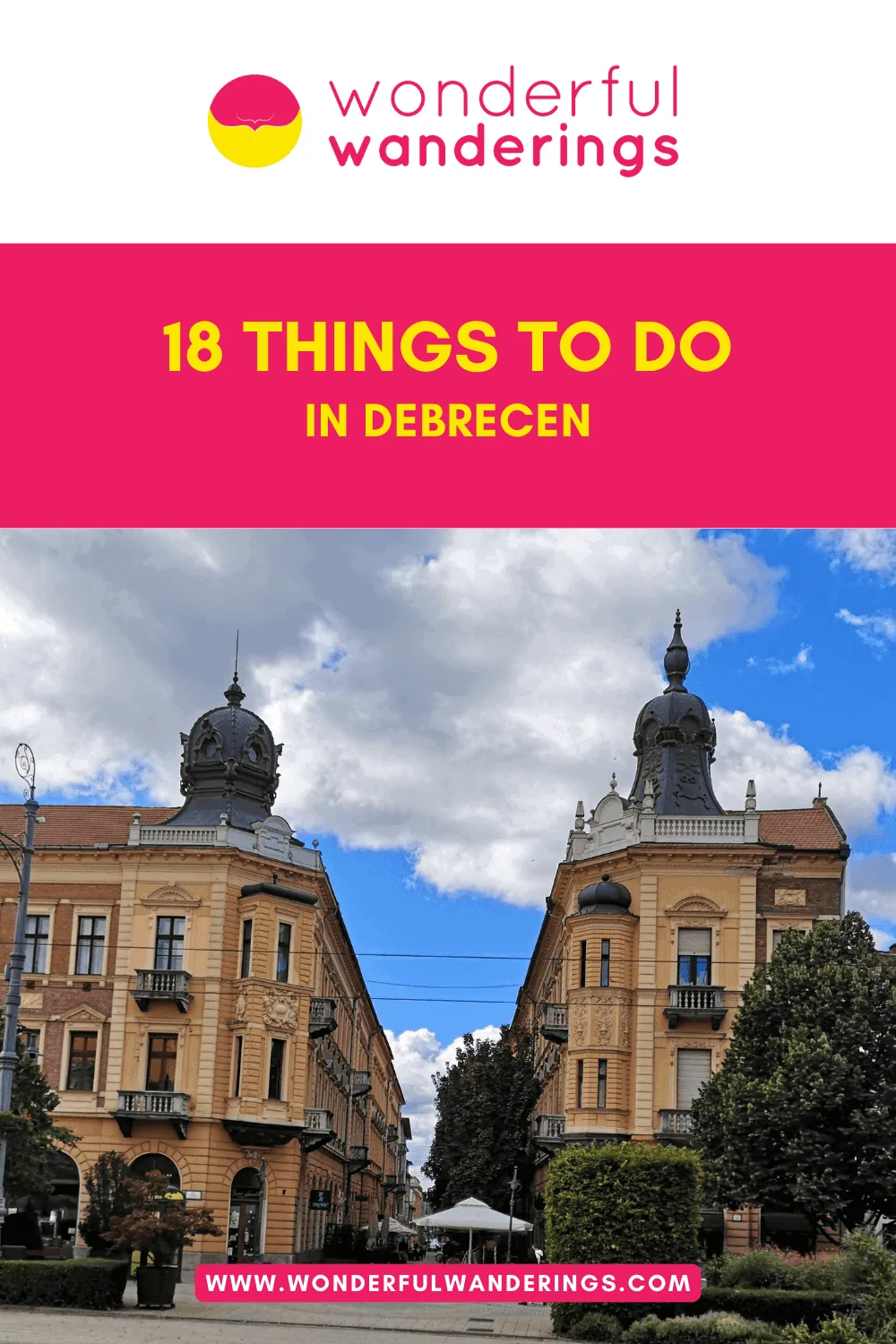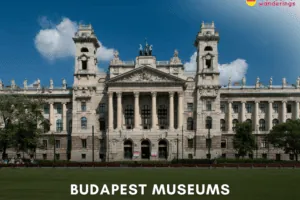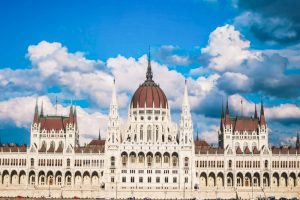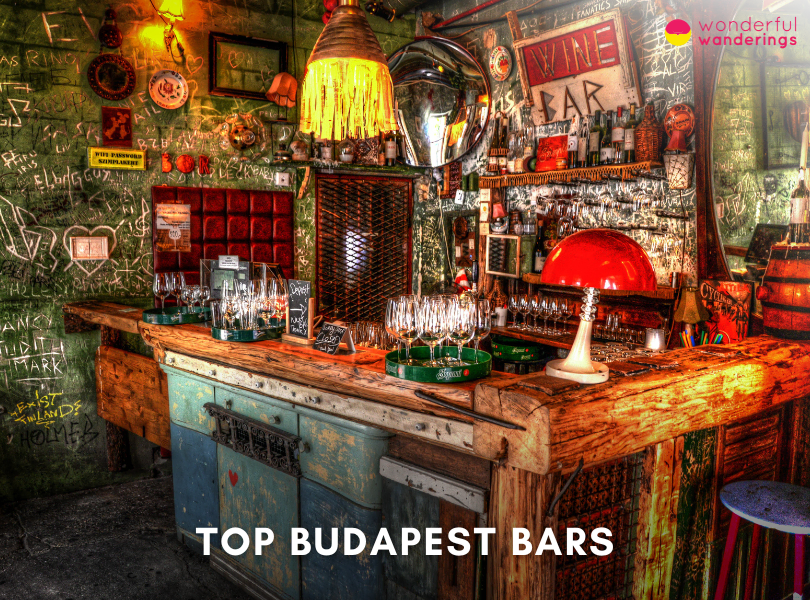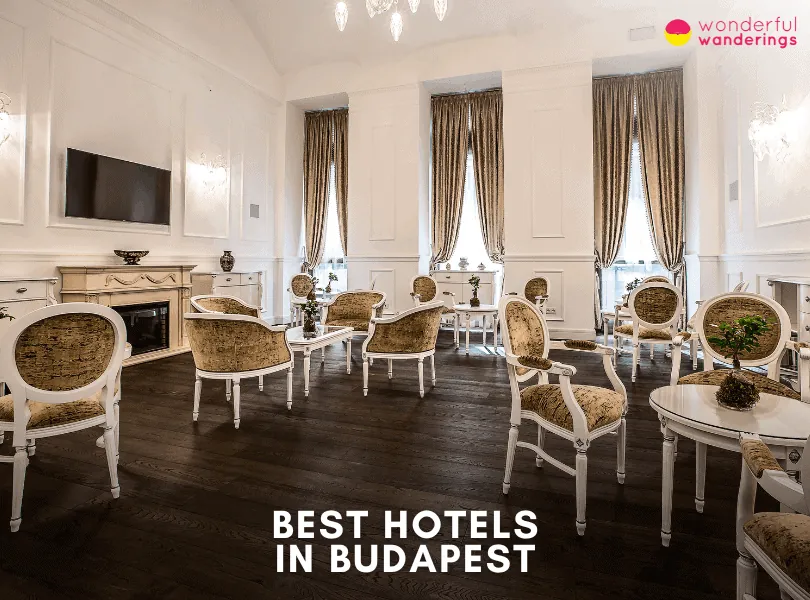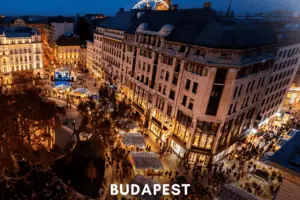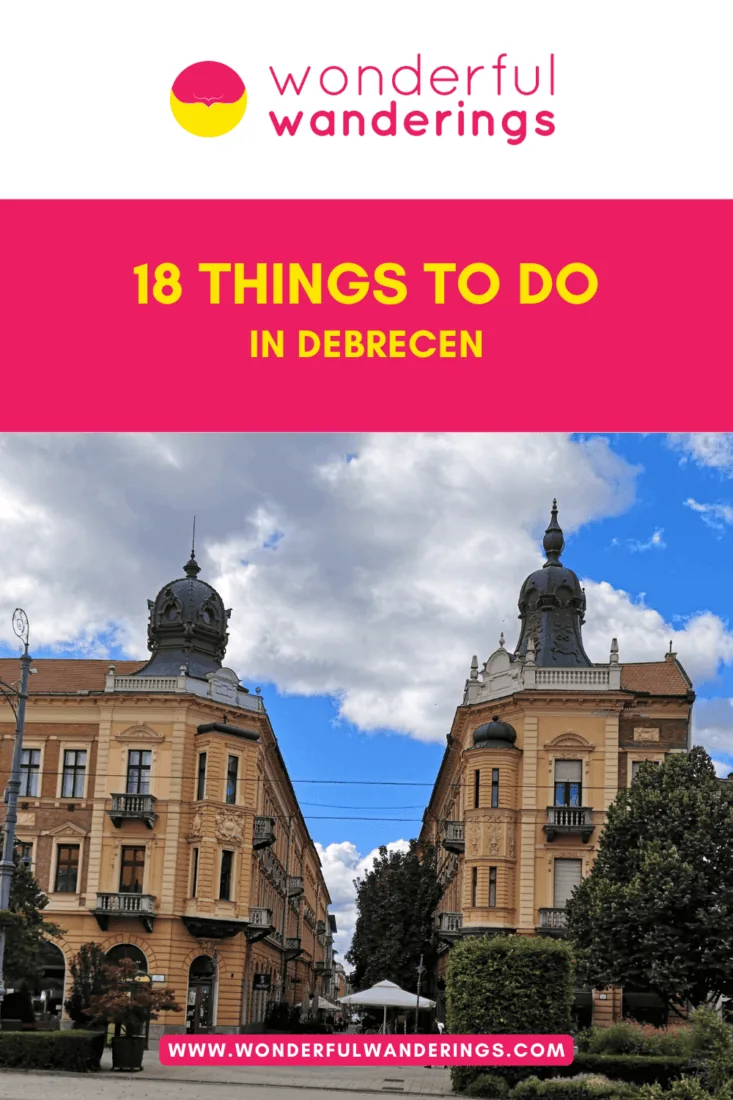Debrecen is the second largest city in Hungary, located in the eastern part of the country near the Romanian border. Debrecen has a long history dating back to 1235, when it was established as a town. Debrecen is an important agricultural and commercial center of trading routes between Eastern and Western Europe. Debrecen serves as the economic and cultural hub of the Northern Great Plain region, with a population of 200,111 people as of 2023.
Debrecen developed into a bastion of Hungarian Protestantism after embracing the Reformation in the 16th century. It became known as the “Calvinist Capital” and grew into an essential center of Hungarian culture and politics. Modern Debrecen is considered the heart of Calvinism in Hungary. It holds the unofficial title of “Capital of the Northern Great Plain” due to its size and influence in the surrounding region. Debrecen is eastern Hungary’s administrative, commercial, educational and transportation center.
Debrecen is home to historic landmarks like the Great Reformed Church, the largest Protestant church in Hungary and cultural museums, including the Déri Museum. Visitors can take in scenic nature at Nagyerdő Park with its walking trails, amusement attractions and the popular Békás Lake as a recreational hub. Agora Science Adventure Center brings scientific principles to life, while the Debrecen Zoo and Amusement Park features carnival rides and zoo animal exhibits. Outdoor enthusiasts can challenge themselves on the adventurous obstacle courses at Kerekerdő Adventure Park. The city features Aquaticum Debrecen, a top-rate spa facility centered around thermal mineral springs where guests can enjoy indoor and outdoor pools, water slides, wellness treatments and more. Annual festivals like the colorful Flower Carnival Parade and Debrecen Autumn Festival give visitors a glimpse of the city’s festive scene. Debrecen is in the Central European Time Zone, UTC+1. It observes Daylight Saving Time from late March to late October when clocks are set 1 hour ahead to UTC+2.
Listed below are the things to do in Debrecen.
- Great Reformed Church. The Great Reformed Church in Debrecen, Hungary, has a rich history, with various iterations of churches existing on the site since the Middle Ages, some of which were destroyed by fires. The church was built between 1805 and 1824 and can hold 5000 people. It is the largest Protestant church in Hungary, with the country’s biggest Protestant bell. The church has historical significance as the site where Lajos Kossuth declared Hungarian independence in 1849.
- Déri Museum. The Déri Museum in Debrecen, Hungary, was constructed between 1923 and 1929 and holds over 150,000 objects related to regional and universal history. Its collection was donated by two men and expanded greatly by textile manufacturer Frigyes Déri, who also financed the museum’s building. Exhibits cover local history, art, archaeology, ethnography, decorative arts and sciences. Highlights include three major 1882-1896 religious paintings called the Christ Trilogy by famed Hungarian artist Mihály Munkácsy, plus extensive weapons collections.
- Hortobágy National Park. Hortobágy National Park preserves the traditional Puszta landscape and culture of the Hungarian plains, covering 82,000 hectares in Debrecen. The park earned UNESCO World Heritage status in 1999. Visitors can take carriage rides to explore the old-world life of Magyar cowboys, see birds, attend equestrian shows, hike nature trails and visit handicraft exhibits.
- Nagyerdei Park. Nagyerdei Park in Debrecen, Hungary, is a vast 1000+ hectare green space inside the ancient Great Forest. Winding walking trails pass through shaded hundred-year-old trees. The park’s scenic centerpiece is the large Békás Lake pond. Other top attractions include the thermal spa center, zoo, amusement park, outdoor amphitheater, adventure playground, stadium and ever-growing botanical garden, containing over 650 plant species from Hungary and abroad.
- Debrecen Zoo and Amusement Park. The Debrecen Zoo and Amusement Park combines a zoological garden and a family amusement park. The 17-hectare zoo houses over 900 animals of 200 species, like flamingos, kangaroos and native wildlife. It contains Hungary’s only classic amusement park with 24 rides/attractions for thrill-seekers. Visitors can observe zoo habitats, attend feedings and shows and enjoy dining options. The amusement park features rides for all ages, from toddlers to adults.
- Aquaticum Medicinal and Thermal Baths. The Aquaticum in Debrecen sits over natural hot springs used since the early 1800s, with on-site hotels and dining. Water emerges at 65°C, containing therapeutic minerals that treat skin, respiratory ailments, locomotor problems and more. Specialized medical treatment rooms, saunas, cold plunge pools and massages provide wellness options.
- Lajos Kossuth Monument. The bronze Lajos Kossuth Monument in Debrecen, Hungary, honors Kossuth, a leader in the 1848 revolution to end Habsburg rule. The 15+ meter tall 1914 statue shows Kossuth delivering a rousing pro-independence speech atop a granite pedestal, urging countrymen to take up arms for liberty. The monument commemorates this central figure and captures a pivotal moment for Hungarian democracy and self-rule. Visitors can view the iconic landmark on scenic Kossuth Square near top attractions like the Great Reformed Church.
- Modem Centre for Modern and Contemporary Arts. The Modem Centre in Debrecen, Hungary, is one of Central Europe’s largest modern/contemporary art museums. The core collection stems from the renowned 200-piece Antal-Lusztig Collection of seminal 20th-century Hungarian works. This shows alongside rotating cutting-edge temporary shows. Visitors can view displays, attend public events like lectures and concerts and enjoy family programming.
1. Great Reformed Church (Reformatus Nagytemplom)
The Great Reformed Church or Református Nagytemplom, is located in the city of Debrecen, Hungary. It stands in the city center, between Kossuth Square and Kálvin Square. The history of the Great Reformed Church is rich and complex. A church already stood on the site in the Middle Ages that was burnt down. St. Andrew Church was built in its place between 1297 and 1311 but was burnt down in 1564. The Protestant citizens of Debrecen started to rebuild the St. Andrew Church, which was completed in 1628. The church suffered heavy damages during the freedom fight in 1707 and burnt down again in 1802 during a great fire that destroyed most of Debrecen. The construction of the current Great Church began on April 8, 1805 and was completed in 1824. The Great Reformed Church is special for several reasons. It is the largest Protestant church in Hungary, with a ground space of 1500 m². It also has the largest bell of all Hungarian Protestant churches. The church is a symbol of Protestantism in Hungary and Debrecen refers to it as the “Calvinist Rome”. The church also holds historical significance as it was here that Lajos Kossuth read out the Declaration of Independence on April 14, 1849.
Visitors to the Great Reformed Church can explore its impressive architecture, including its 61-meter-high towers. Visitors can enjoy a panoramic view of the city. The church also houses the old Rákóczi bell, restored after the fire. The church can accommodate 5000 people, with 3000 seats. The church has two organs, one is a new, electronic organ with three manuals and 52 registers, built by Péter Albert in 1981 and the older, Classical organ, built in 1838 by Jakob Deutschmann. The church hosts exhibits of religious history, organ concerts and other musical events. The Great Reformed Church is suitable for all visitors, including families, history enthusiasts, architecture lovers and those interested in religious history. The church has held the status of a national monument since 2013. Entry to the Great Reformed Church is free. There are extra costs for the tower climbs and some special events/concerts.
2. Déri Museum
The Déri Museum is at 1 Déri Square in Debrecen, Hungary’s second-largest city. The museum building was constructed between 1923 and 1929 in the Neo-Baroque architectural style. In front of the building stand four famous sculptures created by Ferenc Medgyessy, representing the disciplines of archaeology, science, art and ethnology. These statues won the Grand Prize at the 1937 Paris Exposition. Déri Museum features a wide-ranging and eclectic collection of over 150,000 objects representing regional history and universal human civilization. The museum owes its existence chiefly to two men, Artúr Löfkovics, a merchant who donated his collection of 2,500 items to the city in 1902 and Frigyes Déri, a wealthy textile manufacturer from Vienna who substantially added to the museum’s holdings when he gifted Debrecen his extensive and valuable collection in 1920. Déri also financed the construction of the museum’s current building.
Visitors to the Déri Museum can view exhibits related to local history, art, archaeology, ethnography, applied arts and the natural sciences. Some highlights include the renowned Christ Trilogy, three monumental religious paintings by famed Hungarian artist Mihály Munkácsy created between 1881 and 1896. The popular weapons collection comprises three main sections. weapons from 15th to 18th century Christian Europe, classic Muslim arms from the Ottoman Empire and Persia and a fine assemblage of Far Eastern weaponry from the Japanese Edo period. The Déri Museum has much to offer visitors of all ages and interests. Families can view recreated historical scenes from medieval Debrecen. Art enthusiasts can admire Munkácsy’s paintings and works by other renowned artists. History buffs can pore over the museum’s collection of ancient artifacts, documents and other historical objects. Children can enjoy the natural science exhibits and interactive displays tailored just for them. Regular admission to the Déri Museum costs 2,000 Hungarian forints (5€, 3£, $5) for adults, students and senior citizens. Special discounted combination tickets that cover both the Déri Museum and Medgyessy Memorial Museum are available. The museum is open Tuesday through Sunday from 10 am to 6 pm, closed Mondays.
3. Hortobágy National Park
Hortobágy National Park is located on the Great Hungarian Plain in eastern Hungary, 80 kilometers (49 miles) east of Debrecen. The park encompasses over 82,000 hectares centered around the village of Hortobágy. Hortobágy National Park preserves the cultural landscape of the Puszta and serves as a living example of traditional land use by the Hungarian people going back over 2000 years. This coexistence between humans and nature led to its designation as a UNESCO World Heritage Site in 1999. The Puszta consists primarily of a vast grassland for animal grazing, especially cattle, sheep and horses. The landscape also contains wetlands, marshes, meadows and forested areas. Over 300 species of birds call Hortobágy home, along with Hungarian grey cattle, water buffalo and other wildlife adapted to the steppe environment.
Visitors to Hortobágy National Park can immerse themselves in the traditional pastoral lifestyle of the Magyar cowboys or csikós. Popular activities include taking horse-drawn carriage rides out on the Puszta, visiting livestock farms and stud farms, seeing exhibitions of traditional handicrafts, dining on hearty Hungarian cuisine at one of the local csárdás (inns) and observing some of the huge bird populations that reside in the park. The park also contains hiking, cycling paths and educational nature trails. Special events held regularly include equestrian shows demonstrating traditional horsemanship and livestock herding techniques. Hortobágy National Park appeals to visitors of all ages and interests. Families can enjoy the hands-on exhibits and activities tailored specifically for children. Birdwatchers and nature lovers will delight in spotting some rare species that call the wetlands home. Visitors who want to experience authentic Hungarian country life will find Hortobágy National Park the perfect destination. Entry into the core area of Hortobágy National Park costs 2000 Hungarian forints (5 €, 3 £, $5). Discounted combination tickets include access to the Hortobágy National Park Visitor Center.
4. Nagyerdei Park
Nagyerdei Park is located in northern Debrecen, Hungary’s second-largest city. Nagyerdei Park is a vast protected green space spanning over 1000 hectares. The park is a part of Debrecen’s Great Forest which has been mentioned in written records since the Árpád dynasty in the 11th century. The ownership and protection of the forest have been formally granted by various Hungarian rulers. Nagyerdei Park offers visitors a peaceful natural escape from the bustling city, with shaded walking trails winding through hundred-year-old trees.
Visitors’ favorite is the Békás Lake, a large pond the size of a football field ringed by a meandering scenic footpath. The lake features a striking fountain and is a popular spot for boating and relaxation. Visitors can stop by the spa center, zoo, amusement park or outdoor amphitheater for food and entertainment. Families with children will appreciate the adventure playground’s climbing structures and ziplines designed to look like giant frogs and fish. Sports enthusiasts visiting Nagyerdei Park will want to check out the Nagyerdei Stadium, an architecturally impressive 20,000-seat arena that hosts football matches and other events. Nature lovers will enjoy the ever-expanding botanical garden, now home to over 650 local and exotic plant species. Visitors are likely to find activities catered to a wide range of tastes and ages in this multifaceted and family-friendly green space. The park offers something for everyone seeking outdoor recreation. Admission to Nagyerdei Park itself is free, but there are fees to access some attractions like the zoo, amusement park and botanical garden. Combined family tickets can be purchased for discounted entry to multiple Nagyerdei sites during the peak season of May 1st to August 31. Visitors in spring and summer will also have the special opportunity to watch a show at the Mist Theater. This open-air venue features a 30-foot high screen of cascading water, used as a backdrop during musical and theatrical performances.
5. Debrecen Zoo and Amusement Park
The Debrecen Zoo and Amusement Park is located at 1 Ady Endre Street in Debrecen, Hungary. It was the first zoo established outside the capital city of Budapest. The zoo covers a combined area of 17 hectares within Debrecen’s Great Forest, one of Hungary’s oldest nature conservation areas. This zoo and amusement park combines the attractions of both a zoological garden and a family-friendly theme park. The zoo is home to over 900 animals representing 200 different species. Highlights include exotic residents like flamingos, gibbons, kangaroos, hippos and native Hungarian wildlife. Hungary’s only classic amusement park also contains 24 rides and attractions for visitors seeking fun and thrills.
Visitors to the Debrecen Zoo can observe animals from all continents in thoughtfully designed enclosures resembling their natural habitats. Special events like feeding times allow for up-close animal encounters. The amusement park features rides for everyone, from toddlers to teens and adults. Other activities include dining at one of the on-site restaurants, attending an animal show, exploring the botanical garden or enjoying seasonal events like the Halloween party. Debrecen Zoo and Amusement Park makes an excellent family-friendly destination for visitors of all ages and interests. Kids can enjoy interacting with the animals and playing on the theme park attractions while parents and grandparents relax over a meal or beverage. The various sights and activities also appeal to school groups, couples and solo travelers looking to spend an enjoyable day in Debrecen. Entry costs 11€ ($10, 9£), including amusement park access, but rides require separate tickets. Discounted family packages and annual passes are available. Both the zoo and amusement park are open daily from March through October, with more limited hours in winter.
6. Aquaticum Medicinal and Thermal Baths
The Aquaticum Medicinal and Thermal Baths complex is located in Debrecen. The complex sits atop the Debrecen Thermal Spa, which opened nearly 200 years ago. The Aquaticum offers visitors multiple units, including an indoor water park, outdoor aquatic park, thermal baths, sauna world, wellness treatments, on-site four-star hotels, restaurants and more. Aquaticum has a natural hot spring water that comes from ancient seabeds. The hot spring reaches 65°C and contains alkali chloride, hydrogen carbonate, iodide, bromide, sodium, calcium, magnesium and more. These therapeutic waters are believed to provide curative effects and health benefits, especially for treating locomotor, skin, respiratory and cardiovascular diseases. Visitors can bathe in pools and tubs with hydrating water temperatures ranging from warm to hot.
Visitors of the Aquaticum can enjoy fun-filled aquatic adventures outdoors or in. The 5,700 square meter outdoor water park contains 15 pools with mushroom waterfalls, massage jets, bubbles and lazy river rides amidst lush park scenery. Adrenaline junkies can brave the thrilling water slides while little ones splash safely in toddler pools. The Mediterranean-themed pleasure baths include wave pools, whirlpools, water slides and grottos, evoking a summer beach vibe all year round. The thermal bath unit offers indoor and outdoor soaking pools, plus specialized medical treatment rooms. Sweat it out in the expansive sauna world before plunging into cold plunge pools. Visitors can pamper themselves with massages, body treatments and more on Wellness Island. The spa attractions at Aquaticum cater to all ages and interests. Families appreciate the children’s pools and playgrounds. Couples indulge in private, luxury spa treatments. Solo travelers and groups find serene relaxation or social fun in the variety of bathing experiences. Visitors with health conditions take advantage of the medicinal therapies.
Access to the basic thermal baths is included for overnight guests of the Aquaticum Hotel. Day passes providing access to all or specific units of the spa are available for outside visitors, with discounted tickets sold on-site. An all-day general access ticket costs 25€ ($27, 23£). Children under age 3 enter free when accompanied by parents. Visitors must provide their towels, robes and sandals, which can also be rented on-site.
7. Lajos Kossuth Monument in Debrecen
The Lajos Kossuth Monument is located in Kossuth Square in the heart of Debrecen, Hungary’s second-largest city. The bronze statue was unveiled in 1914 to honor Lajos Kossuth (1802-1894), a key figure in Hungary’s 1848-1849 revolution and fight for independence from the Habsburg Monarchy. ]The statue commemorates one of Hungary’s greatest statesmen and champions of democracy. Kossuth served as Governor-President of Hungary during the revolution and led the political fight for autonomy and liberty. Kossuth remains a national icon and symbol of freedom. The monument captures him delivering an impassioned speech, urging his countrymen to take up arms against tyranny. The bases are figures representing the Hungarian countries that took part in the War of Independence.
Visitors to Kossuth Square can view and photograph the imposing monument, which stands over 15 meters tall atop a granite pedestal. The statue is part of a scenic urban ensemble that includes the Great Reformed Church, the main building of the Reformed College and the provincial government offices. Tourists may also visit the Déri Museum across the square to learn more about Debrecen’s history and view exhibits related to the 1848 revolution. The monument and square appeal to visitors of all ages and backgrounds. Historians can study the significance of the 1848 revolution and Kossuth’s leadership. Art lovers can admire the dramatic bronze sculpture, which captures a pivotal moment in Hungary’s fight for freedom. Families and school groups visiting Debrecen will appreciate this iconic landmark commemorating the country’s struggle for independence. The square offers a pleasant public space with areas to relax or enjoy snacks from nearby cafés. Viewing the Lajos Kossuth Monument is free and open to the public year-round. Kossuth Square and the statue can be easily accessed on foot from Debrecen’s city center hotels, shops and attractions.
8. Modem Centre for Modern and Contemporary Arts
The Modem Centre for Modern and Contemporary Arts is located in Debrecen’s historic downtown, on Baltazár Dezső Square. The museum opened in 2006 and possesses over 3,000 square meters of exhibition space, making it one of Central Europe’s largest institutions dedicated to modern and contemporary fine art. Modem Centre showcases the seminal 20th-century Hungarian works and the latest efforts by the country’s leading contemporary artists. The core of the museum’s permanent collection comes from the renowned Antal-Lusztig Collection, featuring over 200 paintings, sculptures and other works by major Hungarian artists of the last century. This is supplemented by an active program of rotating temporary exhibitions highlighting current talents and trends across various media.
Visitors to the Modem Centre can view the permanent displays of the Antal-Lusztig Collection, explore cutting-edge temporary shows in the spacious galleries and take part in public programs like lectures on art history, concerts and literary evenings. There are also special activities geared towards families and students, including interactive museum lessons that engage children with art in an enjoyable, educational way. A museum shop sells art books and souvenirs, while the on-site cafe offers refreshments. The Modem Centre appeals to art enthusiasts interested in Hungarian culture and history, families looking for kid-friendly activities, tourists taking in Debrecen’s sights and locals wanting to experience world-class art exhibitions and programming. Modem Centre for Modern and Contemporary Arts offers free admission for all visitors, making it an affordable destination for people of all ages and backgrounds. Special guided tours and workshops are also available at additional cost.
9. Nagyerdei Stadium
Nagyerdei Stadium, officially called the Debreceni Nagyerdei Stadion, is located at 1 Oláh Gábor Street in Debrecen. The stadium opened in 1934, reconstructed and reopened on its current site in 2014. Nagyerdei Stadium is a modern, purpose-built football arena that serves as the home ground of Debreceni VSC, one of Hungary’s most successful and popular clubs. it has the second-largest seating capacity of any Hungarian club stadium, with a capacity of 20,340.
The facility features state-of-the-art amenities, including a heated pitch, LED perimeter lighting, premium seating and a modern sound system. The stadium strikes an aesthetic balance between incorporating signature elements of its 1934 predecessor and introducing a sleek new look.
Visitors to Nagyerdei Stadium can take in a Debreceni VSC home match and experience the electric atmosphere generated by the club’s passionate supporters. Tickets are affordable, allowing hardcore fans and casual spectators to enjoy top-flight Hungarian league football in an intimate venue. Fans can also visit the DVSC Fan Shop located within the stadium to purchase team apparel and merchandise. Visitors may take a guided tour to explore areas like the home and visiting team locker rooms that are normally restricted when there are no matches. Nagyerdei Stadium offers an accessible and enjoyable sporting experience for visitors of all ages and backgrounds. Football lovers can cheer on Debreceni VSC alongside the diehard local fanbase. More casual visitors will appreciate the stadium’s sightlines and amenities that enhance the live match atmosphere. Architecture buffs get the bonus of experiencing a Hungarian stadium hailed for its aesthetic blend of old and new design elements.
Standard ticket prices for Debreceni VSC home matches cost 3€ ($3, 2£). Premium VIP packages are also available at higher prices for those seeking an upgraded match experience.
10. Agora Science Adventure Center
The Agora Science Adventure Center is located in the city of Debrecen, within the University of Debrecen’s Botanical Garden, in Egyetem tér 1, 4032 Debrecen, Hungary. Agora Science Adventure Center presents complex scientific concepts and phenomena in an easy-to-understand, interactive and entertaining way. The center contains over 30 interactive stations and games that allow visitors to explore principles of physics, chemistry, biology, astronomy and more. Visitors can play music using lightning bolts on a Tesla coil, ride a bike suspended in mid-air or shoot balloons using a magnetic cannon. There are also multimedia displays, a giant saltwater aquarium, an on-site planetarium with space films and lectures and special programs like scientific demonstrations and workshops.
Visitors to the Agora Science Adventure Center are encouraged to explore the various interactive games and exhibits independently at their own pace. These hands-on activities make learning about science fun and engaging for all ages. The center hosts special science shows, planetarium presentations and events like “Science Night” several times per week that visitors can attend. School groups and families are welcome to visit and play. The center is ideal for school field trips, family visits and anyone with a general interest in science. Younger children can enjoy learning through play and experimentation. Older kids, teens and adults can gain deeper insight into scientific concepts through the center’s advanced displays. The programs also aim to get girls specifically more interested in STEM fields. Regular admission tickets to enter the Agora Science Adventure Center are 1,800 Hungarian Forints (4€, $5, 2£) for children, students, retirees and teachers. Special group rates, family packages and memberships are also available. Access to the adjoining University of Debrecen Botanical Garden is free with all tickets.
11. Pásti Street Synagogue
The Pásti Street Synagogue is located at 4025 Debrecen, Pásti utca 4, in the city of Debrecen. It sits in the heart of Debrecen’s Jewish quarter, surrounded by sites related to the city’s history and heritage. The synagogue was built in the early 1880s and opened in 1902 to serve Debrecen’s growing Orthodox Jewish community. Its elaborate Moorish-Byzantine style makes it stand out architecturally. Inside, colorful wall decorations and stained glass windows fill the spacious sanctuary. The synagogue functioned continuously until World War II, when it was heavily damaged and the Jewish community was devastated by the Holocaust. Over 6,000 Jews from Debrecen were killed in concentration camps and forced labor. The remaining community members worked to preserve what was left of the synagogue despite lacking resources for full restoration. It served Orthodox services until 1984, when Debrecen’s last Orthodox rabbi passed away. In 2001, exterior reconstruction helped stabilize the building. An extensive multi-year renovation began in 2012 with support from various organizations. The restored Pásti Street Synagogue reopened in 2015 to take on multiple community roles once again.
Visitors can tour the synagogue and view exhibits relaying the history of Jewish life and culture in Debrecen. Rotating art displays fill the interior. The building also serves as a conference venue, lecture hall and performance space, hosting various public events. Those wishing to connect with the present-day Jewish community can attend Shabbat services in the attached winter house, chat with the rabbi or join communal meals. The most moving site adjoining the synagogue is the Holocaust memorial wall erected in 2015. All 6,000 names of Debrecen Jews murdered during WWII are engraved into the concrete and metal structure. A memorial garden offers space for solemn reflection. People of all backgrounds and ages can find meaning in a visit to Pásti Street Synagogue. The restored landmark teaches volumes about Hungarian Jewish heritage. Art exhibits, cultural events and hospitality spaces unite employees and visitors. The memorial carries lessons against hate and injustice. There is no cost for entry, so touring the synagogue makes for an affordable, enlightening activity while in Debrecen.
12. Main Building of the University of Debrecen
The Main Building of the University of Debrecen is located at 1 Egyetem Square in the city of Debrecen. The university traces back to 1538 when the Calvinist College of Debrecen was established. This college served as a key center of learning for centuries, eventually evolving into the present-day University of Debrecen. The university’s iconic main building was constructed between 1923 and 1929 in a Neo-Baroque architectural style. The Main Building, designed by architect Flóris Korb and decorated by renowned Hungarian stained glass artist Miksa Róth, exemplifies the blending of old and new influences. The glass-ceilinged interior courtyard is surrounded by arched corridors with walls inscribed with famous professors’ and alumni names. The building also houses Róth’s monumental stained glass pieces commemorating the university’s history. Out front lies a scenic French-style park, home to a fountain where graduating students take a plunge as part of a beloved tradition.
Visitors to the Main Building can take self-guided or guided tours to view the magnificent courtyard, stained glass works and other areas usually closed to the public, like the ceremonial halls. Visitors can also stroll through the park, snap photos of the iconic architecture or stop at the on-site gift shop. The building appeals foremost to prospective and current students. The beauty and history of the structure also draw art enthusiasts, architecture buffs, tourists and anyone interested in Hungarian culture. Entry into the University of Debrecen Main Building is free and open to the public during daylight hours. Guided tours need to be booked in advance. The Main Building of the University of Debrecen is a must-see for all visitors.
13. St. Anne’s Cathedral in Debrecen
St. Anne’s Cathedral is at 15 Szent Anna Street in Debrecen, Hungary. The Baroque-style Catholic cathedral was built between 1721 and 1746, commissioned by Cardinal Imre Csáky. It was designed by Italian architect Giovanni Battista Carlone and originally dedicated to the Church of St. Anne in 1746. St. Anne’s Cathedral features history and architectural beauty. It has functioned as the cathedral of the Roman Catholic Diocese of Debrecen-Nyíregyháza since 1993, when Pope John Paul II visited and designated it as such. The cathedral features many fine Baroque details, including frescoes, stucco ornamentation and three limestone statues on the facade depicting St. Emerich, St. Stephen and the Virgin Mary with Christ Child. Highlights include the ornate golden main altar and a 19th-century copy of painter Mihály Munkácsy’s iconic painting “Christ Before Pilate”.
Visitors to St. Anne’s Cathedral can walk through the historic interior, view the artwork and architectural details, attend a service, light a candle and pray or reflect. The cathedral frequently hosts concerts, organ recitals and other cultural events. Tourists may appreciate a visit for its religious history and Baroque aesthetic. The adjacent St. Anne’s Square offers a public space with cafes after touring the cathedral. St. Anne’s Cathedral best appeals to Roman Catholic visitors and those interested in Hungarian church history and architecture. Christians can attend Mass and access familiar rituals and symbols of their faith. The cathedral attracts more casual tourists wishing to see a Baroque church or important Debrecen landmark. With staff able to provide information in multiple languages, it welcomes international visitors.
Entry to view St. Anne’s Cathedral is free and open to the public during daylight hours. Some areas may be restricted at certain times when services are being held. Notable events in the cathedral may require purchased tickets. Guided tours are also available seasonally for a fee.
14. Museum of the Reformed College of Debrecen
The Museum of the Reformed College of Debrecen is located in Debrecen, Hungary, at 16 Kálvin Tér (4026 Debrecen, Hungary). The museum is housed within the historic buildings of the Debrecen Reformed College, founded in 1538 as one of Hungary’s first Protestant institutions of higher learning. The museum provides insight into the history of Protestantism and education in Hungary. The museum is located inside an active university. It has a dual purpose of documenting the college’s influential history and the religious art and culture of Hungarian Calvinism. Permanent exhibits trace the college’s growth into the intellectual and spiritual center of the region, emphasizing its role in spreading the Reformation. Displays also showcase historical student life and the college’s rare book collection, including medieval manuscripts. A separate exhibit hall is dedicated to religious art, primarily from the late Middle Ages and early modern era. Here visitors can view ecclesiastical textiles, goldsmith works and other liturgical items that demonstrate the distinctive visual culture of Hungarian Protestantism.
Visitors to the museum can take self-guided tours of the permanent exhibits. Guided tours for groups are also available with advance requests. Travelers interested in history, education, religion and art would enjoy this museum. Budget-conscious visitors must note that admission is affordable, with discounted rates for seniors, students and families. Visitors should allot 1-2 hours to view the entire museum. The museum lies adjacent to other sites of interest, such as the Great Library, which contains over half a million volumes, rare Bibles and the meteorite that landed near Debrecen in 1857. The neighboring Great Church of Debrecen and Déri Museum are also within walking distance. Visitors can easily spend a whole day exploring Debrecen’s cultural attractions surrounding the museum.
15. Debrecen Plaza
The Debrecen Plaza is located at 18 Péterfia Street in Debrecen, Hungary. The plaza originally opened on December 10, 1998. It was the first Western-style shopping mall established in Debrecen and one of the earliest built in Hungary outside Budapest. Debrecen Plaza combines shopping, dining, entertainment and leisure under one roof. The three-story complex houses over 50 stores and shops alongside various eateries and a multiplex cinema. The air-conditioned environment provides a comfortable shopping experience year-round. Highlights include international apparel brands like H&M and Reserved, hypermarkets like Auchan and DM and the 10-screen Cinema City showing the latest film releases.
Visitors to the Debrecen Plaza can shop at a variety of fashion, accessories, electronics, home goods and specialty stores. Families are drawn to the indoor playground and kids’ play area. The food court and restaurants offer many dining options when a break is needed. Movie-goers can take in a show at the popular multiplex cinema and adjacent 4DX theater. Events like product launches, sales and family programs are also frequently held. Debrecen Plaza appeals to visitors of all ages and interests. Teens and young adults flock to shop for trendy clothing brands and see films with friends. Parents can browse home goods stores while kids play. Retirees enjoy meeting over coffee. Employees visit on lunch breaks or after work to run errands. Tourists check out the mall to experience a slice of modern Hungarian life. Affordable dining and cinema options make it an ideal spot for families, students and budget travelers.
Entry into Debrecen Plaza is free and open to the public. Certain attractions like the movie theater, games and some events require separate paid tickets for entry. The mall has its own adjacent covered parking garage that charges hourly rates.
16. SZUSZ Park
The SZUSZ Park is located at 5 Kalocsa Street in Debrecen, Hungary. The park is in a green suburban area called Lencz Telep. The SZUSZ Park originated as a fishing pond open to the public. It has undergone significant development over the years and expansions to turn it into a 5-hectare leisure and aqua park. The park serves as an excellent venue for corporate events, weddings, family gatherings or friendly meetups in a peaceful, natural setting away from the noise of the big city.
Visitors to the SZUSZ Park have a wide variety of recreational activities. The 1-hectare fishing pond remains a popular spot for anglers looking to relax or teach their kids how to fish. The seasonal swimming area includes kids’ pools, jacuzzis, a large sandy beach and sports facilities like beach volleyball and soccer fields to stay active. Families can enjoy playgrounds, an indoor playhouse, bouncy castles, open grassy spaces and shaded picnic areas. There are covered patios and designated fire sites for grilling outdoors or cooking goulash in cauldrons. The on-site restaurant and pizzeria offer hearty, traditional Hungarian fare and wood-fired pizzas that can be enjoyed lakeside on the pier for a perfect summer day. The 24-room guesthouse complex allows visitors traveling farther away to turn their trip into a multi-day getaway. SZUSZ Park welcomes all ages and interests. Admission costs 4€ ($5, 2£) per person for park entry. Fishing permits, equipment rentals, restaurant dining, guesthouse lodging and special services like event venue bookings vary in pricing. Discounts are available for children, students, retirees and larger groups. The SZUSZ Park brings city residents and out-of-town visitors the experience of fresh air, natural scenery and wholesome recreation beyond Debrecen’s urban streets. Its woodland setting and diverse amenities make it a unique getaway for families, friends, colleagues and gatherings in Hungary’s Great Plains region.
17. Apolló Cinema
The Apolló Cinema is located at 1 Miklós Street in Debrecen, Hungary. Apolló Cinema opened in 1912 and has been an essential cultural institution in Debrecen. The cinema has undergone various renovations and upgrades over the decades and it retains its original location right in the heart of the city center. Apolló Cinema features both mainstream blockbuster films and independent art house movies. It is the only registered art cinema in the region and takes pride in curating a diverse range of cinematic experiences for visitors. The cinema has three screening rooms with state-of-the-art sound systems and HD digital projectors. The largest seats 176 people and two smaller theaters have capacities of 74 and 63 people. There is also a café and lounge area for moviegoers to relax before or after screenings.
Visitors to the Apolló Cinema can choose from a wide selection of films daily, from the latest Hollywood hits to European art films to Hungarian movies. The cinema also hosts special events like film festivals; retrospective screenings focused on specific directors and appearances by actors or filmmakers. Apolló organizes an annual Hungarian Film Harvest festival and frequent educational events where audiences can discuss and analyze films with invited experts. The activities and programming at Apolló Cinema are suitable for all ages and tastes and there are always family-friendly options. The café lounge also welcomes visitors who are not seeing a movie but simply wish to meet up or pass the time in an artsy environment. Admission prices vary depending on the film, with matinee and student discounts available. Visitors can check the cinema’s website to see the schedule of films currently screening and reserve seats online in advance.
18. Kerekerdő Adventure Park
The Kerekerdő Adventure Park is located inside the Kerekerdő Recreational Park at 30 Oláh Gábor Street in Debrecen, Hungary. The Kerekerdő Adventure Park opened its doors in the spring of 1995, founded by childhood friends Ákos Kovács and Bence Farkas. Ákos and Bence both grew up camping and exploring the forests near their hometown in Hungary and wanted to share their love of the outdoors with others. The adventure park opened more recently in 2015.
Kerekerdő Adventure Park allows visitors to challenge themselves on a series of aerial rope courses constructed using live trees within the lush, natural setting of the park. The self-guided courses offer exciting physical tests for kids and adults, spanning over 5 acres and comprising over 100 unique challenges like wobbly bridges, Tarzan swings, zip lines and more. Difficulty levels range from beginner to extreme, allowing people of all ages and fitness levels to find an appropriate adventure. Safety harnesses and equipment ensure a secure experience. Visitors can traverse self-guided rope courses of varying difficulty levels while harnessed to safety lines. Courses take 60-90 minutes to complete. Kids aged four and up can access special children’s courses with lower heights and easier elements. The park also features archery ranges, trampolines and picnic facilities. The on-site Bistro offers refreshments and light meals.
Visitors seeking fun outdoor recreation or a unique team-building activity will find this aerial adventure park fits the bill. Kerekerdő Adventure Park is an ideal active destination for families, youth groups, school field trips, adult teams and solo visitors. The recreational nature of the park and its focus on safety over extreme thrills also make it very beginner-friendly. Regular admission to Kerekerdő Adventure Park costs 4,000 Hungarian forints (10 €, 9 £, 10 $). Family packages and annual passes are available at discounted rates. The park is open daily from March through November, with weekend-only hours in winter. Visitors must sign a waiver to participate.
What are the best museums to visit in Debrecen?
Listed below are the best museums to visit in Debrecen.
- Museum of the Reformed College of Debrecen. The Museum of the Reformed College of Debrecen is housed within the historic buildings of the Debrecen Reformed College, founded in 1538 as one of Hungary’s first Protestant institutions of higher learning. The museum provides insight into the history of Protestantism and education in Hungary. The museum is located inside an active university. It has a dual purpose of documenting the college’s influential history and the religious art and culture of Hungarian Calvinism.
- Modem Centre for Modern and Contemporary Arts. The Modem Centre for Modern and Contemporary Arts is located in Debrecen’s historic downtown on Baltazár Dezső Square. The museum opened in 2006 and possesses over 3,000 square meters of exhibition space, making it one of Central Europe’s largest institutions dedicated to modern and contemporary fine art. Modem Centre showcases the seminal 20th-century Hungarian works and the latest efforts by the country’s leading contemporary artists.
- Déri Museum. The Déri Museum in Debrecen, Hungary, was constructed between 1923 and 1929 and holds over 150,000 objects related to regional and universal history. Its collection was donated by two men and expanded greatly by textile manufacturer Frigyes Déri, who also financed the museum’s building. Exhibits cover local history, art, archaeology, ethnography, decorative arts and sciences. Highlights include three major 1882-1896 religious paintings called the Christ Trilogy by famed Hungarian artist Mihály Munkácsy, plus extensive weapons collections.
What are the best things to do in Debrecen with kids?
Listed below are the best things to do in Debrecen with kids.
- Debrecen Zoo and Amusement Park. The Debrecen Zoo and Amusement Park is perfect for families, combining zoo animal exhibits with carnival rides like bumper cars and roller coasters, entertaining kids of all ages. Toddlers can safely ride the mini carousel and train rides while older kids and teens can enjoy.
- Aquaticum Debrecen Water Park. The Aquaticum Debrecen Water Park allows families to play together in the water year-round, featuring both covered and outdoor pools and slides open in summer, accessed through a Mediterranean-themed sauna world. Aquaticum is a paradise with toddler pools, exciting slides for daredevil kids over 120 cm tall, waterfall bucket dumps and bubbles and even a lazy river – not to mention parents can enjoy the spa area. Families will make lifelong fun memories at Aquaticum Water Park.
- Kerekerdő Adventure Park. Kerekerdő Park in Debrecen allows kids to challenge themselves on self-guided rope courses and obstacles between 1 to 6 meters off the ground, safely harnessed with equipment provided. Toddlers ages 2+ can enjoy cute frog-themed climbing structures, while older kids and teens will find over 100 challenges, from wobbly bridges to zip lines and Tarzan swings that test balance and courage. Kerekerdő Adventure Park offers family outdoor fun.
- Agora Science Adventure Center. Agora Science Adventure Center helps make physics, engineering and chemistry fun for kids through over 30 interactive stations, games and experiments, from generating lightning bolts to 3D printing workshops. Agora lets families enjoy science concepts together, supplemented by astronomy films in the on-site planetarium. Agora encourages scientific curiosity for toddlers and children alike through hands-on learning.
What are the best activities for a business traveler in Debrecen?
Listed below are the best activities for a business traveler in Debrecen.
- The MODEM Modern and Contemporary Art Center. The MODEM Modern and Contemporary Art Center is near Debrecen’s main square. It houses modern paintings and sculptures from Hungarian and international artists in rotating exhibitions. Business travelers can schedule an hour to view inspiring works and discuss them further over coffee or lunch at MODEM’s on-site cafe with meeting contacts. Art appreciation has creative benefits for any industry, sparking new perspectives.
- Aquaticum Debrecen Thermal & Wellness Hotel. Aquaticum Debrecen Thermal & Wellness Hotel is a 4-star Aquaticum Debrecen Thermal & Wellness Hotel connected to the Aquaticum spa complex that is an ideal base for business travelers seeking comfortable accommodations alongside wellness amenities to unwind. The hotel offers indoor thermal pools, saunas, massage treatments, free high-speed WiFi and an on-site restaurant.
- Agora Science Adventure Center. Agora Science Adventure Center in Decedren contains over 30 interactive stations for experimenting with scientific principles from physics to chemistry to astronomy. Teams can bond through friendly competition after meeting or work. Analyzing one’s approach afterward identifies strengths like precision or clarity in communication to leverage back at work.
- Apolló Cinema. Apolló Cinema in downtown Debrecen offers blockbuster and art house film screens, including some English-language movies. Business travelers can catch up on films not yet released in their home countries. The historic cinema, which opened in 1912, also offers a cultured experience to discuss over drinks or meals with colleagues while in Debrecen.
Where is Debrecen?
Debrecen is the second largest city in Hungary. It is located in the Great Hungarian Plain, 220 kilometers (136 miles) east of the capital Budapest near the Romanian border. Debrecen serves as the economic and cultural center of eastern Hungary and the historical region of Hajdúság.
Debrecen sits near the Hortobágy National Park, a UNESCO World Heritage Site showcasing the traditional life and culture of the Magyar people. Debrecen is in a strategic location at the crossroads of major roads and railways connecting Hungary to Eastern and Southeastern Europe. Debrecen is the county seat of Hajdú-Bihar and the seat of Debrecen Subregion. It is the largest city in the Northern Great Plains region and serves as the main hub for education, commerce, transportation, industry and culture in the surrounding area. Owing to its size and influence, Debrecen holds the unofficial title of “Capital of the Northern Great Plain”.
What is the history of Debrecen?
Debrecen has a long and rich history dating back to the Middle Ages. The area has been inhabited since ancient times and Debrecen was established as a town in 1235. It was an important agricultural and commercial center on trading routes between the East and West. In the 16th century, Debrecen embraced the Protestant Reformation and became known as the “Calvinist Rome”. It developed into an essential Hungarian cultural and political hub, hosting Crown Prince Ferdinand in 1536. Debrecen preserved relative prosperity despite foreign occupations and wars. Debrecen was severely damaged during World War II but recovered in the post-war years. Under communist rule, it industrialized rapidly but lost significant territory and rights. Debrecen has evolved since the fall of communism in 1989 into a modern regional center of education, commerce, transportation and culture while preserving its historic architecture. Debrecen is Hungary’s second-largest city and an important economic and cultural hub.
What language is spoken in Debrecen?
The predominant language spoken in Debrecen is Hungarian. Of 200,111 people living in Debrecen, 209,782 people or 99.3%, speak Hungarian as their native language. Debrecen’s widely spoken foreign languages include English, German and Russian. It is stated that 23.6% of the population speaks conversational English, making it the most popular foreign language. There are 10.6% of residents speak German, while 2.6% of the population speak Russian. The high percentage of native Hungarian speakers reflects Hungary’s linguistic homogeneity. Hungarian is spoken natively by over 98% of the total population nationwide. The presence of foreign languages also highlights Debrecen’s diversity and status as an important educational center. This facilitates international business, academic conferences and tourism in the city.
What time zone is Debrecen in?
Debrecen is in the Central European Time zone, UTC+1. Hungary does observe daylight saving time and the local time in Debrecen is UTC+2 during the summer period. The time zone abbreviation for Central European Time is CET. The time in Debrecen is CET (UTC+1) during winter and switches to CEST (UTC+2) along with the rest of Hungary during summer.
How many people live in Debrecen?
The total population living in Debrecen is 200,111 people as of 2023. The population is evenly distributed between men and women, with 95,368 men and 104,743 women residing in the city.
The city has 38,774 children aged between 0 and 14 years, including both boys and girls. There are 48,505 young adults aged 15-29 years living in Debrecen. Debrecen has 9,736 elderly residents who are 60 years and above in age.
What are the most interesting facts about Hungary and Debrecen?
Listed below are the most interesting facts about Hungary and Debrecen.
- Currency. The official currency of Debrecen and all of Hungary is the Hungarian Forint (HUF). Banknotes come in 500 HUF, 1000 HUF, 2000 HUF, 5000 HUF, 10,000 HUF and 20,000 HUF. Coins come in 5 HUF, 10 HUF, 20 HUF, 50 HUF, 100 HUF and 200 HUF denominations.
- Time Zone. Debrecen is in the Central European Time Zone, UTC+1. It observes Daylight Saving Time from late March to late October when clocks are set 1 hour ahead to UTC+2.
- Language. Hungarian is the official language spoken by over 98% of the population. Other languages like English, German and Russian are spoken, especially in tourism, business and education. Some basic Hungarian phrases are still helpful to know.
- Power Plugs. The power sockets used in Debrecen and Hungary are the standard European Type C and Type F with 230 V and 50 Hz frequency. Visitors outside Europe need a power plug adapter and sometimes a voltage converter to charge their electronic devices.
How many days are needed to see Debrecen?
It is recommended to stay for 2 to 3 days, which is enough time to see the highlights of Debrecen. The major sights recommended to visitors include the Great Reformed Church, Déri Museum, Aquaticum thermal baths, Nagyerdő Park, the zoo and the adventure park. These can be covered in 2 to 3 days. Debrecen has enough attractions and atmosphere to occupy a traveler for a longer period. Two to three days offer ample time to see the highlights and get a good feel for the city without rushing.
Is Debrecen worth visiting?
Yes, Debrecen is definetely worth visiting. Debrecen is Hungary’s second-largest city and it offers a mix of culture, history, architecture, festivals, cuisine and university life. Key attractions include the Great Reformed Church, Déri Museum, Aquaticum thermal baths, beautiful Nagyerdő Park and lively café scene. The annual Flower Carnival is also a huge draw. Debrecen provides both urban amenities and proximity to the Hortobágy grasslands.
Is Debrecen expensive to visit?
No, Debrecen is considered an affordable destination for travelers, especially compared to other places in Hungary. Debrecen has developed a good tourism infrastructure with ample accommodation and dining options across budget categories. Numerous free attractions like Nagyerdő Park, the Great Forest, the Fountain of Youth and architectural sights make it relatively affordable for sightseeing. Public transportation like trams, buses and trolleybuses provide an economical way around the city. Budget solo travelers can manage 30€ ($25, 25£) per day, including accommodation, while couples can spend from 56€ ($51, 48£) and above per day. The favorable exchange rate between the Hungarian Foreign and Western currencies like the Euro and Dollar helps stretch budgets further for visitors. Debrecen has no shortage of paid attractions and indulgences for those seeking a higher-end visit. Budget-conscious tourists can easily explore the city through free sights, public transport and reasonably priced food, accommodation and entertainment. Its accessibility and value make it a worthwhile Hungarian destination on a budget.
Is Debrecen safe to visit?
Yes, Debrecen is very safe to visit. Basic precautions should be taken, but violent crime levels are low. Tourists can feel comfortable walking around central areas day or night. The friendly hospitality also makes visitors feel welcome. As long as reasonable travel safety rules are followed, Debrecen presents no greater risks than most European destinations.
Is Debrecen easy to visit with kids?
Yes, Debrecen is easy to visit with kids. Attractions like the zoo, adventure park, water park, hands-on science museums and outdoor thermal baths cater well to children. There are also kid-friendly restaurants and cafés. The compact city center is walkable and accessible. The lively Nagyerdő Park provides ample space for kids to run around. Family-friendly hotels and apartments are easy to find.
What is Debrecen famous for?
Debrecen is most famous for its status as the “Calvinist Capital” of Hungary, a bastion of Protestant faith during the Reformation. Landmarks like the Great Reformed Church and Reformed College symbolize this legacy. Secondly, Debrecen is famous due to the city’s huge annual flower carnival with elaborate floats, which draws recognition locally and internationally. Thirdly, Debrecen is renowned for its Nagyerdő Park, the bustling university scene, proximity to the Hortobágy grasslands and a thriving cultural, commercial and transport hub for eastern Hungary. Fourthly, Debrecen is famous as it was the site of important 1848 Revolution events and briefly served as the capital near the end of World War II. Lastly, Debrecen is also renowned as a regional center of education, referring to it as “the Calvinist Rome”.
Who are the most important Hungarians born in Debrecen?
- Zoltán Kodály (1882-1967). Zoltán Kodály was a famous Hungarian composer and music pedagogue. He was born in Kossuth Lajos Street in Debrecen on December 16, 1882. Kodály is known for developing a music education method and collecting and preserving Hungarian folk songs. He died in Budapest on March 6, 1967.
- László Papp (1926-2003). László Papp was a Hungarian boxer born in Debrecen on March 25, 1926. He was a three-time Olympic champion in the middleweight division, the first boxer to win three Olympic gold medals. He died in Budapest on October 16, 2003. Papp was inducted into the International Boxing Hall of Fame.
- Magda Szabó (1917-2007). Magda Szabó was a Hungarian writer born in Debrecen on October 5, 1917. She is most known for her novel “The Door”, which brought her international success. Szabó died in Budapest on November 19, 2007. She is considered a famous Hungarian and country’s best modern novelists.
What to eat in Debrecen?
Listed below are what you can eat in Debrecen.
- Debreceni Sausage. Debreceni Sausage is a spicy, paprika-flavored pork sausage made with mangalitsa pork and special spices according to a traditional Debrecen recipe. It is usually grilled or fried and served with bread, vegetables or rice.
- Fisherman’s soup (halászlé). Fisherman’s soup (halászlé) features carp, green peppers and paprika in a rich broth and is a typical Hungarian soup you’ll find on menus across Debrecen. Locals like to add hot paprika paste to give this soup an extra kick.
- Hortobágyi Palacsinta. Hortobágyi Palacsinta are sweet or savory stuffed pancakes filled with cottage cheese, sour cream, beef goulash or minced meat originating from the nearby Hortobágy region but are also popular in Debrecen. They make for hearty, comforting meals. Hortobágyi Palacsinta is one of best local foods to eat in Hungary.
- Töltött káposzta (stuffed cabbage). Töltött káposzta (stuffed cabbage) is a beloved Hungarian dish of cabbage leaves wrapped around a filling of rice, tomatoes, onions, parsley and minced pork, then simmered in a paprika-tomato sauce. It is a specialty in the region and the city of Debrecen.
- Lecsó. Lecsó is a rich vegetable stew made from tomatoes, peppers, onions and paprika that can feature eggs, sausage or pork chops. Lecsó can be found at many restaurants around Debrecen.
- Rétes. Rétes is a traditional Hungarian strudel dessert with sweet fillings like apple, cherry, cheese, poppy seed or nut inside flaky phyllo dough. Rétes from Debrecen tend to be made with homemade strudel sheets stretched paper thin.
What are the best places to eat in Debrecen?
Listed below are the best places to eat in Debrecen.
- IKON Restaurant. IKON Restaurant is a contemporary Hungarian restaurant located in the city center of Debrecen that features local ingredients prepared with modern techniques. The extensive menu creatively fuses traditional recipes with innovative cooking methods to produce unexpected flavors. Diners can enjoy a fine dining experience with attentive service in a sleek, upscale setting. IKON brings a fresh take on Hungarian cuisine through things like smoked catfish with beetroot foam and duck leg with white bean puree. Reviews praise both the culinary artistry and excellent wine pairings found at IKON.
- Barabás Étterem. Barabás Étterem at Debrecen’s main square provides a versatile menu in a cozy and welcoming atmosphere. Hungarians flock here for reliable takes on classic dishes like stuffed cabbage rolls and Wiener schnitzel using quality ingredients. Visitors consistently cite the warm, efficient service and charming ambiance enhanced by details like white tablecloths and flowers on each table. With reasonable prices, Barabás satisfies both comfort food cravings and a desire to try Hungarian staples. It is also one of the restaurants to eat in Debrecen.
- Maszek Bisztró. Maszek Bisztró combines urban chic with a lively spirit as both a bistro and cocktail bar located downtown Debrecen. The affordable menu punches above its weight with delicious comfort food like goulash soup and breaded pork cutlets. Its casual vibe and colorful murals appeal to college students and young professionals who flock here for drinks. Maszek is also praised for craft cocktails that perfectly complement the quality of generously sized dishes. It captures Debrecen’s youthful energy.
- Belvárosi Restaurant. Belvárosi Restaurant takes a refined approach to its international and Hungarian offerings. Visitors experience meticulous plating, white tablecloth service and upscale decor. The kitchen’s precise execution of French techniques comes through in dishes like duck leg confit and Black Angus steaks. Belvárosi also shines with Hungarian specialties by elevating staples with premium ingredients. It provides an elegant destination for fine dining in Debrecen for special occasions.
What are the best areas to stay in Debrecen?
Listed below are the best places to stay in Debrecen.
- Debrecen City Centre. Debrecen City Centre is a neighborhood in Deceren close to top attractions like the Great Church, Déri Museum, MODEM art center and lively Kossuth Square. Debrecen is ideal for first-time tourists due to its central location and accessibility and is generally safe for solo travelers.
- Hatvan District. Hatvan District is a residential neighborhood in Debrecen near top attractions like the Déri Museum, Great Church and train station. Hatvan District offers an authentic local atmosphere with affordable dining. It is close to the city center by foot or public transport. Generally safe for solo travelers due to proximity to tourist sites.
- Belváros. Belváros is a downtown district in Debrecen featuring many top attractions like the Great Church, Kossuth Square and Déri Museum. The neighborhood features a lively ambiance with bars, restaurants and cultural events. Its convenient central location is ideal for sightseeing. It is regarded as safe for solo travel in main tourist zones.
What are the best accommodations to stay in Debrecen?
Listed below are the best accommodations to stay in Debrecen.
- Hotel Divinus. Hotel Divinus is a 5-star hotel located at Debrecen’s Great Forest. The hotel provides decorated rooms with Mediterranean flair, including deluxe rooms with separate living space and 2-bedroom executive suites. Visitors can enjoy breakfast with scenic views of the nearby park, relax in the hotel’s spa area featuring pools and saunas and receive discreet yet high-quality service from the professional staff. The hotel aims to provide a quiet, exclusive retreat that allows easy access to Debrecen’s top attractions. Hotel Divinus is one of the best hotels to stay in Debrecen, with its prime location, great facilities and high-end accommodations.
- Malom Hotel. Malom Hotel is a 4-star boutique hotel in a restored 19th-century mill in central Debrecen. It underwent renovation in 2013 to blend classic Hungarian décor like patterned fabrics seamlessly with modern amenities like flat-screen TVs. The comfortable, air-conditioned rooms come equipped with private bathrooms to ensure guests’ comfort. The hotel offers a business center, meeting room, 24-hour front desk service and an on-site restaurant serving Hungarian cuisine.
- Aquaticum Debrecen Thermal & Wellness Hotel. Aquaticum Debrecen Thermal & Wellness Hotel is a contemporary 4-star hotel that literally sits atop the Aquaticum Thermal Bath complex in Debrecen’s Great Forest Nature Reserve. The rooms feature balconies and bathrobes so guests can enjoy scenic views and easily access the spa, which has discounted access for hotel guests. The hotel also has an on-site restaurant and rooms tailored specifically for disabled guests, making it accommodating for all visitors.
- Hotel Lycium. Hotel Lycium is a modern 4-star hotel connected to Debrecen’s Kölcsey Convention Center downtown. It delivers amenities like free WiFi, air conditioning, an indoor pool and spa area and an on-site restaurant serving Hungarian and international fare. Business-friendly features include underground parking and facilities for disabled travelers. The hotel offers accessibility and a range of amenities under one roof.
- Hotel Villa. Hotel Villa is a cozy 4-star hotel located in the peaceful setting of Nagyerdő Park, though still just a 20-minute walk from Debrecen’s downtown. The elegantly furnished rooms provide amenities like work desks and satellite TVs. Visitors can enjoy access to the hotel’s sauna, free WiFi throughout the premises, dining on Hungarian and international cuisine and sitting outdoors in the quiet garden area.
How to get from Debrecen to Budapest Ferenc Liszt International Airport?
There are a few ways to get to Budapest Ferenc Liszt International Airport from Debrecen. These are by train, bus and driving. Firstly, take a train from Budapest Nyugati train station to Debrecen train station. An InterCity (IC) train takes 2.5 hours, while a slower train takes 3.5-4 hours. Tickets can be purchased at Debrecen train station and a one-way ticket costs 3950 HUF (10€, $11, 9£). Secondly, take a direct bus from Budapest Airport to Debrecen bus station. The bus journey takes 2.25 hours. Tickets can be purchased online in advance or at the Debrecen bus station. Lastly, drive from Budapest Airport to Debrecen, which covers 219 kilometers (136 miles) and takes 2.25 hours. Take route M0 from the airport, then route M3 towards Budapest and route 4 to Debrecen. Tolls apply on the motorways. The fastest option is the direct bus from Debrecen to the airport, taking 2.25 hours.
How to get from Debrecen to Budapest?
There are a few ways to get to Budapest from Debrecen. These are by train, bus and driving. Firstly, take a train from Budapest Nyugati train station to Debrecen train station. An InterCity (IC) train takes 2.5 hours, while a slower train takes 3.5-4 hours. Tickets can be purchased at Debrecen train station. An IC train ticket costs 3950 HUF (10€, $11, 9£). Secondly, take a direct bus from Budapest Airport to Debrecen bus station. The bus journey takes 2.25 hours. Tickets can be purchased online in advance or at the Debrecen bus station. Lastly, the driving distance is 219 kilometers (136 miles) and takes 2.25 hours. Take route M0 from the airport, then route M3 towards Budapest and route 4 to Debrecen. Tolls apply on the motorways. Parking is available in Budapest but may have associated costs. The fastest option is to take the InterCity train from Debrecen to Budapest Nyugati station, which takes 2.5 hours.
Where to go shopping in Debrecen?
There are several great places to go shopping in Debrecen. These are Debrecen Plaza, FÓRUM Debrecen Shopping Centre, Halköz Shopping Centre, Malompark Shopping Centre, Stop Shop Debrecen and Debrecen Market. Firstly, Debrecen Plaza is a large shopping center in the city’s heart with 58 stores, restaurants, a movie theater and more. Secondly,
FÓRUM Debrecen Shopping Centre is the largest shopping center in the region with 120 stores, restaurants, a playhouse for children and entertaining events. Major brands like Zara, Bershka, Douglas, Springfield and more are located here. Thirdly, Halköz Shopping Centre is a shopping center near the Halköz Piazza with stores, apartments, offices, restaurants and an underground parking lot. Fourthly, Malompark Shopping Centre is a shopping center with two buildings, one dedicated to shopping, that hosts stores like pharmacies, grocery stores, bookstores and more. Fifthly, Stop Shop Debrecen is a retail park with various stores, including Deichmann, H&M, Intersport, New Yorker, furniture stores and more. This retail park offers budget-friendly prices and a wide range of products. Lastly, Debrecen Market is the city’s biggest farmer’s market on Vár Street, selling local goods and souvenirs. Other farmer’s markets in the city also offer local produce.
What festivals or events are taking place in Debrecen?
Listed below are the festivals or events that are taking place in Debrecen.
- Debrecen Flower Carnival. Debrecen Flower Carnival is a week-long festival held each August that celebrates the anniversary of the foundation of the Hungarian state. The highlight is a colorful parade with floats featuring giant floral arrangements representing fairy tales, legends and other stories. Hundreds of performers in traditional costumes dance alongside the parade route, which draws crowds of over 100,000 spectators.
- The Campus Festival. The Campus Festival is one of Hungary’s biggest open-air music festivals, held every July in Debrecen. It spans five days in Debrecen’s Great Forest, with over 200 concerts spread throughout 19 different stages and venues. The festival welcomes over 50,000 visitors yearly and has featured acts like Dutch DJ Tiesto, Aurora, Zara Larsson and Chase & Status. It is one of the much-awaited festivals in Debrecen.
- Debrecen Autumn Festival. Debrecen Autumn Festival is a multi-week arts and culture festival held each September. It encompasses events like avant-garde theatre productions, photography exhibitions, concerts, literary readings and children’s programs. Venues include the Csokonai National Theatre and public spaces like parks and plazas. The festival draws locals and art enthusiasts across Hungary to its dozens of shows and exhibitions.
- The Béla Bartók International Choir Competition. The Béla Bartók International Choir Competition is a world-famous choir festival occurring each summer in Debrecen. The week-long music competition sees choirs and a cappella groups from around the globe compete for prizes and recognition. It also comprises folklore performances, church concerts, dance shows and street parties, entertaining over 5,000 attendees. Béla Bartók International Choir Competition is considered one of the top festivals to attend in Hungary.
PIN FOR LATER
Find below our best travel guides about Hungary.

